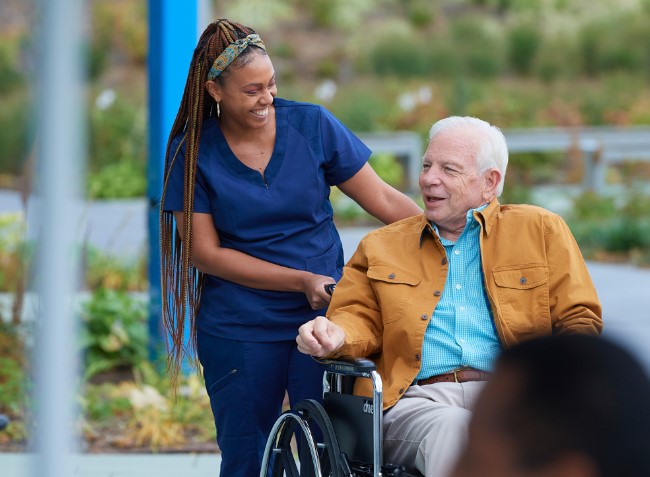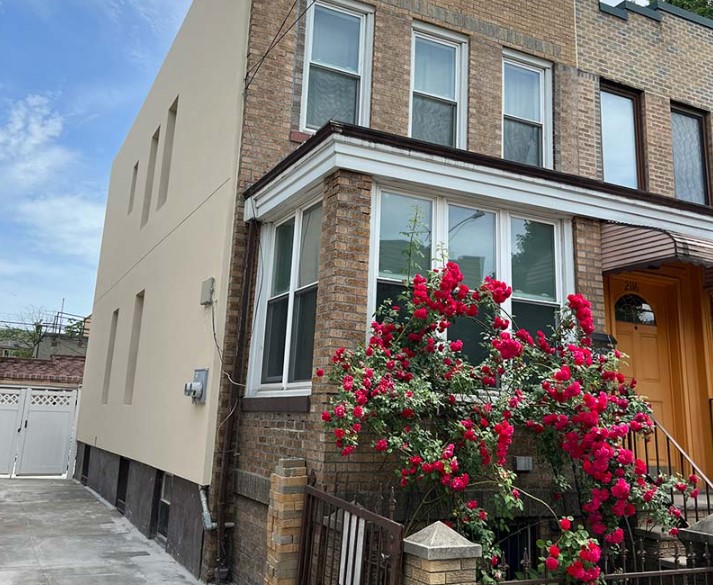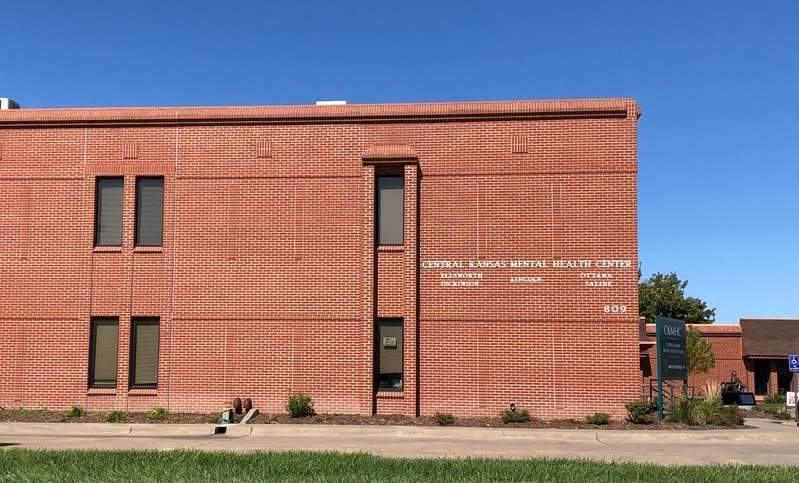Adirondacks looks to build future health care
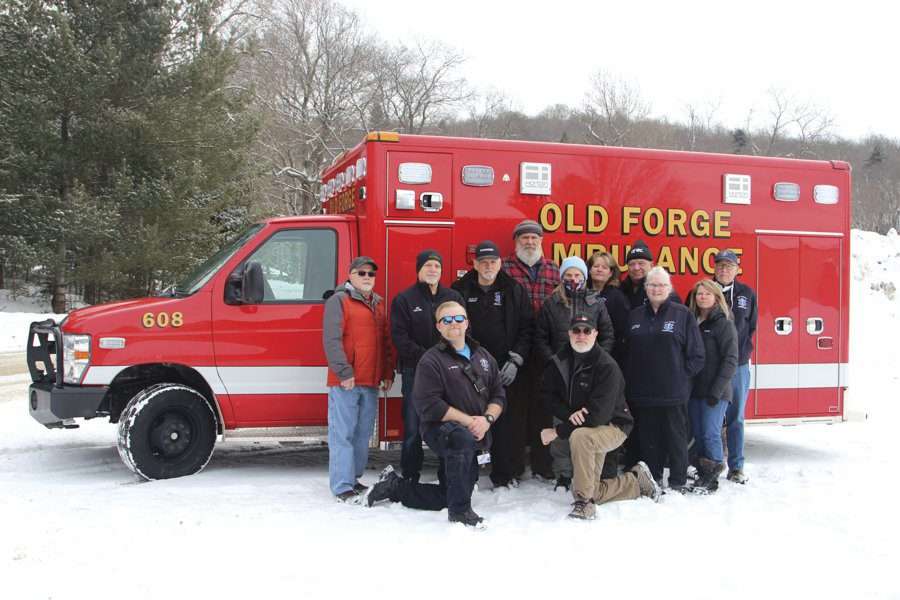

Health care providers explore options to meet needs of park population that includes growing number of part-time residents
By Stephen Leon
In Old Forge, which has a small health center, Mike Farmer has seen people show up at the visitor information center “seeking immediate medical assistance for everything from serious external bleeding to seizures to suspected heart attacks and strokes.”
Farmer or other center personnel call 911. EMTs either direct the patient to the Town of Webb Health Center—a weekdays-only, 8:30 a.m. to 4:30 p.m. operation—or rush them by ambulance to a hospital an hour away from the western Adirondack village.
“Some of the risk posed by the absence of an urgent care facility is minimized by the heroic efforts of EMT/ALS/ambulance staff,” Farmer said.
RELATED: Old Forge Volunteer Ambulance Corps aims to treat minor emergencies within the community, saving patients lengthy trips to ERs READ MORE
Farmer, the tourism and publicity director for the Town of Webb (which includes Old Forge), and others who live in isolated areas of the Adirondack Park reside in health care “deserts.” Their nearest hospital or urgent care is at least an hour away. When people in Lake Pleasant need emergency care, ambulances transport them to Nathan Littauer Hospital in Gloversville. From Webb, they are taken to one of two hospitals in Utica.
Farmer recounts a recent case in which a stricken resident received care by local emergency personnel and was transported by ambulance to Alder Creek to meet a Life Flight helicopter. He died two days later.
“Of course,” Farmer said, “it’s impossible to know if access to an urgent care facility within 20 minutes of the event would have made any difference. Balanced against 60 minutes to the hospital, it seems the outcome could not have been any worse.”
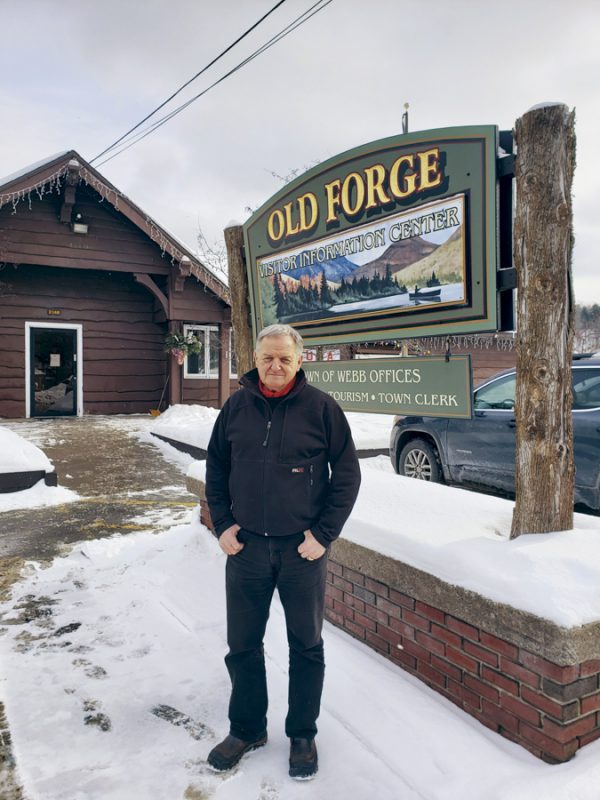
Building for the future
Rural towns today rely on health care systems that may be inadequate for the populations they serve. But the Adirondack Park may soon be confronting a new challenge: how to build the health care infrastructure for a potentially increasing population.
The pandemic, and the large-scale shift to remote work, showed that many people are moving out—or considering moving out—of large cities, and into less populated regions, including the Adirondacks.
More than 837,400 people submitted change-of-address requests from New York City addresses in 2020, a 36{b574a629d83ad7698d9c0ca2d3a10ad895e8e51aa97c347fc42e9508f0e4325d} increase over 2019, according to a report from the city office of the comptroller citing data from the U.S. Postal Service.
And the Adirondack Council, in its publication Vision 2050, suggests that the park—already a COVID refuge—could soon become a “climate sanctuary.”
“As climate change renders more places across the country and globe inhospitable, the Adirondack Park will increase its appeal as a potential home,” the Council writes. “There’s an opportunity to welcome those migrating due to climate change and see a more diverse population in communities across the Adirondacks. Doing so will require communities to be ready and willing to embrace newcomers and build a reputation for being safe, welcoming, and inclusive.”
“Maybe,” council communications director John Sheehan said, “the park’s health care facilities should be a little more robust.”
As the pandemic took hold in 2020, some people with Adirondack summer homes moved out of their primary residences and sheltered here. The park population may have grown because of them and newcomers.
“It’s almost impossible to gauge,” Sheehan said, “because the 2020 count was going on while people were moving. We do know that for the better part of 2020 and 2021, the real estate market was on fire to the point where people were paying well over market rate, [sometimes] buying over the telephone without going and seeing the location.”
More to Explore
Subscribe to print/digital issues of Adirondack Explorer,
delivered 7 times a year to your mailbox and/or inbox
“The demand for what the Adirondacks have to offer is going to go up—there’s no doubt in my mind,” said Jim McKenna, CEO of the Regional Office of Sustainable Tourism (ROOST) in Lake Placid.
“The transient visitors are now exceeding 2019,” McKenna said. “I think climate change could add to that, but this is a general trend that we [already] had started to identify”—people wanting to get out of congested cities.
In January 2021, consultants hired by ROOST published the Adirondack Relocation Assessment Survey, which targeted “Adirondack visitors and enthusiasts” from seven Northeast states. The study, McKenna said, found that more than 120,000 households are potentially considering relocating to the Adirondacks.
Respondents’ top priorities were quality affordable housing, outdoor recreation, and availability of health care. ROOST forecasts increased demand for health care and technologies jobs in the Adirondacks, as planners attempt to diversify the economy beyond tourism.
In rural America, people are more likely than urban dwellers to die from heart disease, cancer, unintentional injury, chronic lower respiratory disease, and stroke, the Centers for Disease Control reported in 2017. Unintentional injury deaths are about 50{b574a629d83ad7698d9c0ca2d3a10ad895e8e51aa97c347fc42e9508f0e4325d} higher in rural areas, partly due to greater risk of death from motor vehicle crashes and opioid overdoses.
The Adirondack Park differs from some rural areas in that it has population swings: about 130,000 permanent residents, a seasonal occupation that adds about 300,000, plus 12.4 million annual visitors.
Current conditions
Several health-care networks deliver services in many corners of the park, and for some, their evolving models of care offer glimpses into potential solutions.
In the eastern and central Adirondacks, Hudson Headwaters Health Network—a designated Federally Qualified Health Center that receives significant state and federal grant funding as well as donations through its foundation—runs community health centers (most with Saturday hours and telehealth options) in North Creek, Bolton, Indian Lake, Schroon Lake, Tupper Lake, and Saranac Lake, along with others outside the park. The network’s center in Warrensburg provides urgent care. Central to the HHHN mission is improving health care access to medically underserved communities.
The tri-village region is relatively well-covered. Adirondack Health operates the Adirondack Medical Center in Saranac Lake, a hospital with 24-hour emergency care, and the Lake Placid Health and Medical Fitness Center, with emergency care from 8 a.m. to 8 p.m. daily and 24-hour care during major events. Adirondack Health staffs primary care centers Monday-Friday in Tupper Lake, Keene, and St. Regis Falls.
The Gloversville-based Nathan Littauer umbrella includes centers in Broadalbin, Speculator and Mayfield. Its Utica competitor, Mohawk Valley Health System, plans a new hospital in 2023 and operates the health center in Old Forge.
In the park’s dead center, Long Lake Medical Center provides a family doctor and staff and the Long Lake Rescue Squad. Most emergency patients are transported to Saranac Lake, a 40-minute drive. Complicated cases get referred to Glens Falls, 90 minutes away.
JOIN THE DISCUSSION: Are you satisfied with the level of care in your community? READ MORE
On the easternmost side of the park, Elizabethtown Community Hospital, under the umbrella of the University of Vermont Health Network, operates a hospital with 25 inpatient beds and 24-hour emergency care. The network includes primary-care health centers in AuSable Forks, Crown Point, Elizabethtown, Westport, Willsboro, and Wilmington, as well as the Ticonderoga Campus, a renovated former hospital with a state-of-the-art outpatient facility and a 24-hour ER. In Ticonderoga, UVM/ECH has partnered with Hudson Headwaters, whose primary care center shares the building.
“Some areas have excellent care because of unusual market forces that are not based on a very large population,” said the Adirondack Council’s Sheehan. For instance, Lake Placid has substantial orthopedic care because of the winter sports industry and “well-insured, high-level athletes to pay for the medical care.” And on the park’s southern edge, thanks to its proximity to Glens Falls Hospital, now run by Albany Medical, Lake George enjoys higher-than-usual services for a community of 2,000.
But in more remote regions with fluctuating populations, like Webb and Lake Pleasant, the numbers do not warrant urgent care facilities, so providers are looking to new strategies.
Experimental models
Across the park, all health networks cite telehealth—providing services remotely—as a growing option. An online patient portal, for example, provides a more secure online tool than email to communicate with doctors or nurses, request prescription refills and review test results and summaries of previous visits.
Matt Scollin, director of external affairs at Adirondack Health in Saranac Lake, said that in some areas of care, telehealth is “absolutely successful,” reducing foot traffic at the hospital. “If there is a challenge,” he said, “broadband and cell are still not ubiquitous.”
With those connection gaps in mind, Robin Hill, executive director of LivingADK in the Old Forge area, credited Mohawk Valley Health Systems with bringing telehealth to their primary care center. “They recently added a private telehealth room with computer that anyone, even non-MVHS patients, can schedule time with their specialist,” Hill said.
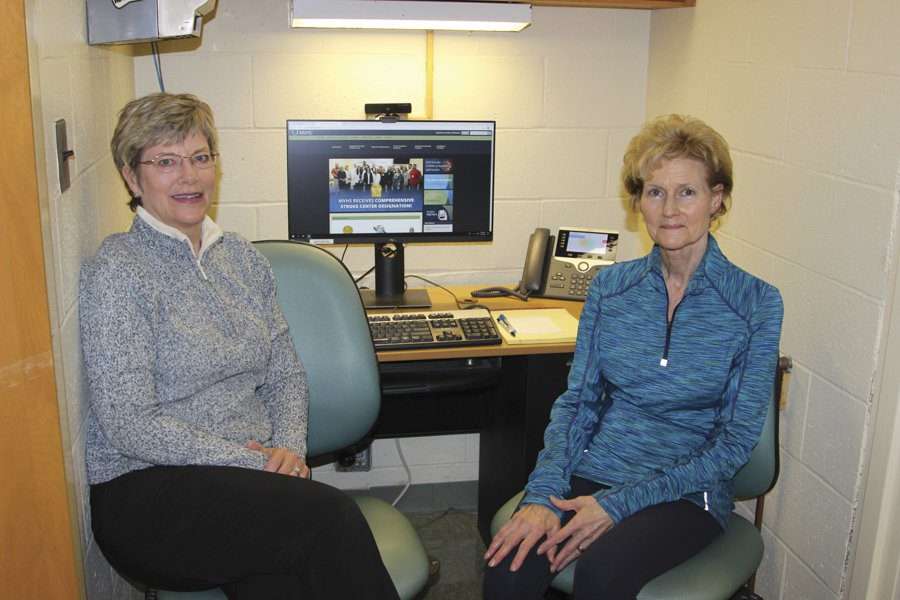
Driving to patients is gaining traction. Adirondack Health puts many miles on its mobile dental clinic, and successfully transformed it for pandemic testing. “We’re very proud of that,” Scollin said. “We’re moving much more quickly than hospitals were [previously] known to move.” Scollin said there are no current plans to add more mobile services.
Hudson Headwaters recently launched a mobile unit to address “health inequities and expand access by creating the region’s first primary care mobile health program.”
Its vehicle visits four HHHN locations close to its headquarters in Queensbury—only one of which, Lake Luzerne, in the park. Jessica Rubin, a Hudson Headwaters vice president, said the new service is under review. “We have so much to learn.”
Plans call for extending the vehicle service farther into the park as the network assesses the pilot program. We are “looking to perfect the model so we can go into more rural and remote reaches of our service region,” Rubin said.
Another emerging model involves rotating providers into specialty clinics. The UVM/ECU Ticonderoga Campus has the equipment and dedicated space for the outpatient services handled by visiting doctors and practitioners. Among the specialties are cardiology, gastroenterology, colorectal screening, orthopedic, women’s health, dermatology and diabetes management.
For example, cardiologist Dr. Gavin Noble rotates in twice monthly from UVM’s Porter Medical Center in Middlebury, Vt. Noting that patients often put off care when it is not convenient, ECH president Bob Ortmyer said some of Noble’s patients likely would not travel as far as Middlebury to see him. Another specialist, Dr. Eugene Cassone, a gastroenterologist in Plattsburgh, visits both the Ticonderoga and Elizabethtown campuses.
Hill, of LivingADK, said her organization created a working committee looking at ways to address the need for visiting nurse services, behavioral health, after-hours care, and care coordination. “These are examples of services that would reduce hospital readmissions and ambulance transports if provided here,” she said.
Regularly replenishing the pool of health professionals is essential, especially in areas where one retirement can leave a town without any doctors. “Our mission is access,” said HHHN’s Rubin, “so we spend every minute thinking about how to improve access,” including seeking new partnerships and “continuing to invest in recruitment and retention.”
Adirondack Health seeks to draw professionals by offering modern facilities such as the new state-of-the-art surgical wing in Saranac Lake, and by emphasizing collaboration, Scollin said. “We’re a fully independent health system,” he said. “It’s not 14 layers to get to the decision makers.”
Recruiting doctors also requires finding people who are attracted to the Adirondack lifestyle. Scollin told the story of two doctors from the New York City metro area who visited Lake Placid while dating each other, and fell in love with the place. They got married and started practices here, he said, “so that was a twofer.”
Advocates of paramedicine hope for a similar happy result with a law that would allow community paramedicine. Employed elsewhere in the United States, it could work in the Adirondacks by expanding the role of emergency services personnel, allowing them to provide a wider range of care and thereby reduce emergency visits. Bills that have languished in the state Legislature would authorize “collaborative programs for community paramedicine services.” Supporters say a law is necessary because the state’s lack of a legal framework for paramedicine discourages or even prohibits it.
“Until legislation passes,” Hill said, “that option remains out of reach.”
In Old Forge, Mike Farmer at the visitor center would welcome any options. “It’s almost like we’ve done so much with so little for so long that they think we can do everything with nothing,” he said.
Don’t miss a thing
Sign up for our weekly “Adk News Briefing” newsletter, that highlights the week’s top stories on our two websites: adirondackexplorer.org and adirondackalmanack.com.
Click here to see our full slate of weekly and daily newsletters

